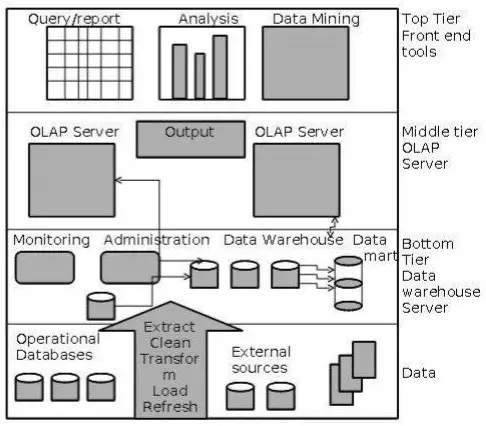
What is Data Warehouse, and why is Data Warehouse separated from the operational database? What are the features and applications of the Data Warehouse? Data Warehouse architecture is one of the most heard architecture so, explain what Data Warehouse Architecture is.
Data Warehouse Architecture

The data warehouse is a technique for collecting and managing data collected from various sources. Data warehousing supports analytical reporting, structured and ad hoc queries and decision making. The information gathered by a data warehouse can be utilized in many domains, such as customer analysis. Customer analysis is done based on customers preferences, buying time, cost, etc. The data warehouse is separated from the operational database because no frequent updating is done in the data warehouse it only contains historical data. User dealing with an operational database does not require any technical skills while a person working with a data warehouse should have special computing skills.
Features of a data warehouse: subject-oriented, collaboration, non-volatile, time variant, and no additional controls.
There are various applications of data warehouse such as banking, finance, telephone transportation, hospitality healthcare, retailers, and many more.

Data warehouse architecture is a three-tier architecture. The bottom tier of the architecture is the data warehouse server. We usually use backend tools to feed data into the bottom tier. This backend tools perform extract, clean, load, and refresh function. In the middle tier, we have the OLAP server, which is divided into two parts ROLAP and MOLAP. The top layer is the front end client layer holds the query processing, data mining, and reporting.














